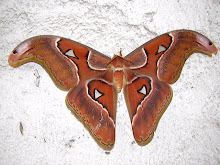
Bulalo is one such favorite soup and the hotter it is the better. It is best complemented by the marrow that is tapped out of the bone. This delightful beef soup is a specialty of the cattle-raising region in the province of Batangas. And now, restaurants in Laguna especially in Calamba is becoming a favorite place to go to when we crave for Bulalo.
Ingredients:
- 1 kilo bias ng baka (beef shank) with bone marrow intact
- water
- 1 big onion, sliced
- 3 stalks leeks, sliced
- 1 package dried banana blossoms
- fish sauce (patis) to taste
- 1 large potato, quartered
- pechay leaves
- Freshly ground black pepper to taste
Procedure:
1. Place beef shank in water to cover and bring to a boil. Boil for 10 minutes then remove shank and discard water.
2. Boil the shank again in 8 cups water and until the stock is flavored and [the water] reduced to half the amount.
3. Add the onions, leeks, potato, pechay and banana blossoms.
4. Season to taste with fish sauce and pepper.
5. Serve hot.






